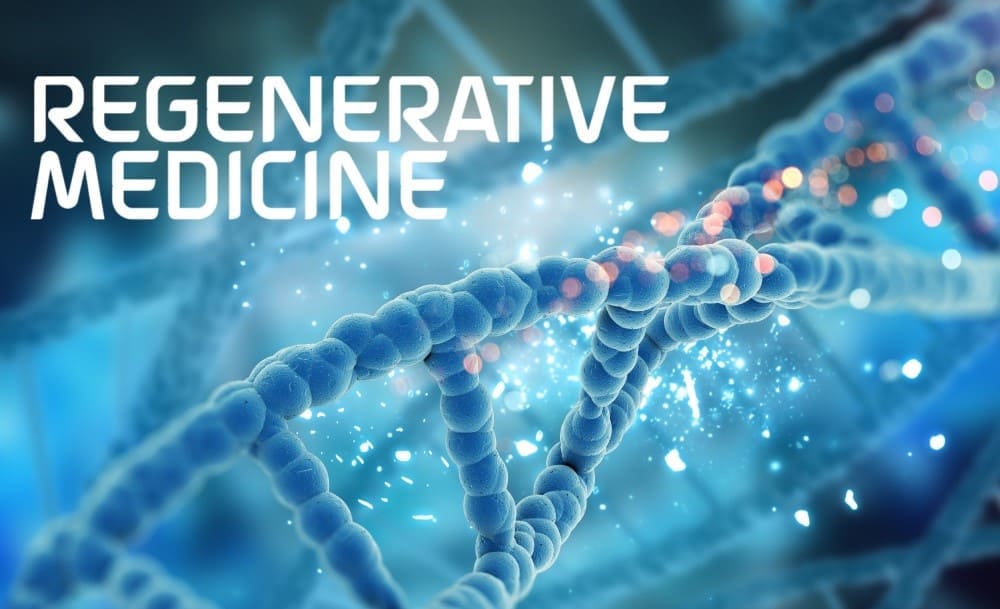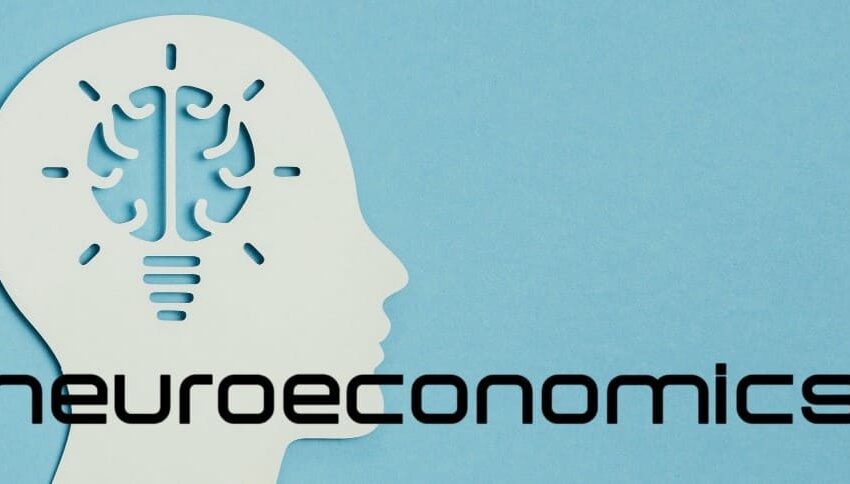
Overview:
To understand what is Regenerative medicine, we need to first look at an emerging field that aims to revolutionize the treatment of a wide range of diseases and injuries by harnessing the body’s natural healing processes. Unlike traditional therapies that often focus on managing symptoms, regenerative medicine seeks to restore or replace damaged tissues and organs, offering the potential for long-lasting and even curative solutions. This innovative approach leverages advances in stem cell research, tissue engineering, gene therapy, and biomaterials to develop therapies that can regenerate damaged cells, tissues, and organs.
The promise of regenerative medicine lies in its ability to address conditions that currently have limited treatment options, such as neurodegenerative diseases, heart failure, and severe injuries. By utilizing the body’s inherent regenerative capabilities, scientists and clinicians aim to develop treatments that not only alleviate symptoms but also repair the underlying damage. This field is at the intersection of biology, engineering, and clinical practice, making it one of the most dynamic and rapidly evolving areas of medical research today. As the technology and understanding of regenerative medicine continue to advance, the potential for transformative healthcare solutions becomes increasingly tangible.
Contents:
- What is Regenerative Medicine
- Evolution of Regenerative Medicine
- Key components of regenerative medicine
- Key benefits of Regenerative Medicine
- Key challenges and risks associated with Regenerative Medicine
- Regulations and compliances for Regenerative Medicine
- Summing Up
So, what is Regenerative Medicine:
Regenerative medicine is a new area of medical science that focuses on finding ways to heal or replace parts of the body that are damaged or not working properly. Scientists in this field work on growing new cells, tissues, or even whole organs to fix problems caused by injuries, diseases, or aging. They use special cells called stem cells and other advanced techniques to help the body repair itself. The goal is to create treatments that can help people recover better from illnesses and injuries, and improve their overall health.
Evolution of Regenerative Medicine:
1. Early Foundations – 19th and Early 20th Century:
Cell Theory: The development of cell theory by scientists like Matthias Schleiden and Theodor Schwann established the concept that all living organisms are composed of cells.
Tissue Culture: Ross Granville Harrison pioneered tissue culture techniques, allowing scientists to study cells in vitro and laying the groundwork for future cell-based research.
2. Mid 20th Century – 1950s and 1960s
Stem Cell Research: The discovery of hematopoietic stem cells by Ernest McCulloch and James Till in the 1960s demonstrated the existence of cells capable of differentiating into various blood cells, introducing the concept of stem cells.
Organ Transplantation: Advances in surgical techniques and immunosuppressive therapies in the 1950s and 1960s made organ transplantation a viable treatment option, highlighting the potential for tissue regeneration and repair.
3. Late 20th Century – 1970s and 1980s
Bone Marrow Transplants: The successful use of bone marrow transplants to treat leukemia and other blood disorders demonstrated the therapeutic potential of stem cells.
Development of Biocompatible Materials: The emergence of biocompatible materials for medical implants and prosthetics laid the foundation for tissue engineering.
4. Pre 21st Century – 1990s
Isolation of Embryonic Stem Cells: James Thomson and colleagues successfully isolated human embryonic stem cells (ESCs) in 1998, which could differentiate into any cell type, opening new avenues for regenerative medicine.
Advances in Gene Therapy: Early successes in gene therapy, despite initial setbacks, showed the potential for correcting genetic defects and treating diseases at the molecular level.
5. Early 21st Century – 2000s
Induced Pluripotent Stem Cells (iPSCs): Shinya Yamanaka’s groundbreaking work in 2006 on reprogramming adult cells to create induced pluripotent stem cells (iPSCs) provided a new source of pluripotent cells without using embryos, overcoming significant ethical concerns.
Tissue Engineering Milestones: Successful engineering of tissues like skin, cartilage, and bladder using scaffolds and stem cells marked significant progress in the field.
6. Recent Past – 2010s
Organoids and 3D Bioprinting: The development of organoids (miniature, simplified versions of organs) and advances in 3D bioprinting technology enabled the creation of complex tissue structures for research and therapeutic applications.
Regenerative Medicine Advanced Therapy (RMAT): The establishment of the RMAT designation by the FDA in 2016 facilitated the development and approval of regenerative therapies.
7. Recent Advances – 2020s
Clinical Applications and Approvals: Increasing numbers of regenerative medicine products, including cell-based therapies, gene therapies, and tissue-engineered products, have gained regulatory approval and entered clinical use.
CRISPR and Gene Editing: Advances in CRISPR/Cas9 and other gene-editing technologies have enabled precise genetic modifications, enhancing the potential for treating genetic disorders and engineering tissues.
8. Ongoing and Future Directions – 2020 Onwards
Personalized Medicine: The integration of regenerative medicine with personalized medicine approaches is tailoring treatments to individual patients based on their genetic and cellular profiles.
Organ Regeneration: Research into whole-organ regeneration and the use of stem cells and biomaterials to create functional organs is ongoing, with the potential to address organ shortages.
Immune Modulation: Advances in understanding the immune system are leading to therapies that can modulate immune responses to enhance tissue regeneration and reduce the risk of rejection.
Key components of regenerative medicine:
1. Stem Cell Therapy
Using stem cells to generate healthy cells and tissues to replace damaged ones.
Types of Stem Cells:
Embryonic Stem Cells (ESCs): Derived from early-stage embryos, these cells are pluripotent, meaning they can differentiate into any cell type in the body. They offer significant potential but also raise ethical concerns.
Adult Stem Cells: Found in various tissues like bone marrow and fat, these are multipotent, meaning they can develop into a limited range of cell types related to their tissue of origin. Examples include hematopoietic stem cells (which form blood cells) and mesenchymal stem cells (which form bone, cartilage, and fat).
Induced Pluripotent Stem Cells (iPSCs): These are adult cells that have been genetically reprogrammed to an embryonic stem cell-like state, providing a way to generate pluripotent cells without using embryos.
Applications:
Blood Disorders: Bone marrow transplants for conditions like leukemia and lymphoma.
Heart Disease: Regenerating damaged heart tissue after myocardial infarction.
Neurological Disorders: Potential treatments for Parkinson’s disease, spinal cord injuries, and multiple sclerosis.
2. Tissue Engineering
Combining scaffolds, cells, and biologically active molecules to create functional tissues.
Scaffolds:
Natural Scaffolds: Made from materials like collagen or decellularized tissues, which retain the extracellular matrix structure.
Synthetic Scaffolds: Made from materials like polylactic acid (PLA) or polyglycolic acid (PGA), which can be designed to degrade at controlled rates and support tissue formation.
Growth Factors:
Proteins: Such as fibroblast growth factor (FGF), vascular endothelial growth factor (VEGF), and bone morphogenetic proteins (BMPs) that promote cell proliferation, migration, and differentiation.
Applications:
Skin Grafts: For burn victims or chronic wound patients.
Cartilage Repair: Engineering cartilage for joint repair in osteoarthritis.
Bioartificial Organs: Developing liver, kidney, or pancreas tissues for transplantation.
3. Gene Therapy
Modifying or manipulating genes within an individual’s cells to treat or prevent disease.
Techniques:
Viral Vectors: Using modified viruses (like lentiviruses or adenoviruses) to deliver therapeutic genes into patients’ cells.
Non-viral Methods: Using techniques like electroporation, lipid nanoparticles, or gene editing tools like CRISPR/Cas9.
Applications:
Inherited Disorders: Treating genetic diseases like cystic fibrosis, muscular dystrophy, and hemophilia by correcting defective genes.
Cancer: Modifying immune cells to better recognize and attack cancer cells, such as CAR-T cell therapy.
Ophthalmic Diseases: Restoring vision in certain types of inherited blindness.
4. Biomaterials
Utilizing natural or synthetic materials to support the repair or regeneration of tissues.
Natural Biomaterials:
Alginate: Derived from seaweed, used in wound dressings and as a scaffold for cell growth.
Chitosan: Derived from crustacean shells, used in drug delivery and tissue engineering due to its biocompatibility and biodegradability.
Hyaluronic Acid: Naturally found in connective tissues, used in skin regeneration and joint lubrication.
Synthetic Biomaterials:
Biodegradable Polymers: Like polylactic acid (PLA) and polyglycolic acid (PGA), used to create scaffolds that degrade as new tissue forms.
Bioceramics: Like hydroxyapatite, used in bone repair and regeneration due to their similarity to natural bone mineral.
Applications:
Drug Delivery: Designing materials that release drugs at controlled rates to target sites.
Wound Healing: Creating dressings that promote tissue regeneration and prevent infection.
Scaffolds for Tissue Engineering: Supporting cell attachment, growth, and differentiation.
5. Cellular Therapies
Introducing new cells into a tissue to treat disease, for example, CAR-T cell therapy for cancer.
Types of Cellular Therapies:
Autologous Cells: Cells derived from the patient’s own body, reducing the risk of immune rejection. Examples include using the patient’s own stem cells to repair damaged tissues.
Allogeneic Cells: Cells from a donor, which can be used off-the-shelf for immediate treatment. These require careful matching and immunosuppression to prevent rejection.
Applications:
CAR-T Cell Therapy: Modifying T cells to target and destroy cancer cells, particularly effective in some types of leukemia and lymphoma.
Mesenchymal Stem Cells: Used for their anti-inflammatory properties and ability to differentiate into various tissues, treating conditions like osteoarthritis and inflammatory bowel disease.
Islet Cell Transplantation: Transplanting insulin-producing cells to treat diabetes.
Key benefits of Regenerative Medicine:
1. Restoration of Function:
Repair and Replacement: Regenerative medicine aims to restore normal function by repairing or replacing damaged tissues and organs. This can lead to the complete healing of injuries and diseases rather than just managing symptoms.
2. Treatment of Chronic Diseases:
Chronic Disease Management: Many chronic diseases, such as diabetes, heart disease, and neurodegenerative conditions, can be treated more effectively by regenerating damaged tissues or organs, potentially reducing the need for lifelong medication and management.
3. Reduction in Organ Transplant Waiting Lists:
Bioengineered Organs: Developing bioartificial organs and tissues can alleviate the shortage of donor organs, reducing waiting times and increasing the availability of life-saving transplants.
4. Improved Quality of Life:
Functional Recovery: By restoring the function of damaged tissues and organs, regenerative medicine can significantly improve the quality of life for patients, enabling them to lead more active and fulfilling lives.
5. Personalized Medicine:
Tailored Treatments: Regenerative therapies can be customized to the individual patient’s needs, using their own cells (autologous therapies) to reduce the risk of immune rejection and improve treatment outcomes.
6. Advancements in Disease Understanding:
Research and Development: The research driving regenerative medicine also advances our understanding of disease mechanisms, which can lead to the development of new treatments and preventive strategies.
7. Minimally Invasive Treatments:
Less Invasive Options: Many regenerative therapies, such as stem cell injections, are less invasive compared to traditional surgeries, leading to shorter recovery times and fewer complications.
8. Potential for Curing Genetic Disorders:
Gene Therapy: Regenerative medicine includes gene therapy techniques that can correct genetic defects, potentially curing inherited diseases and reducing the incidence of these conditions in the population.
9. Enhanced Wound Healing:
Accelerated Recovery: Advanced materials and growth factors used in regenerative medicine can promote faster and more effective wound healing, reducing the risk of infection and complications.
10. Application Across Multiple Fields:
Versatility: The principles and technologies of regenerative medicine can be applied across various medical fields, including orthopedics, cardiology, neurology, and dermatology, making it a versatile tool for healthcare providers.
Key challenges and risks associated with Regenerative Medicine:
1. Immune Rejection:
Challenges: Even with autologous therapies (using a patient’s own cells), there can be immune responses against transplanted tissues or cells. Ensuring compatibility and preventing rejection remains a significant challenge.
2. Safety Concerns:
Risks: Introducing new cells or genetically modified materials into the body carries risks of unintended immune responses, tumorigenesis (formation of tumors), or adverse reactions to biomaterials used in scaffolds.
3. Complexity of Tissue Engineering:
Challenges: Designing and manufacturing complex tissues and organs with proper vascularization and integration into the host environment is technically challenging and requires advanced biomaterials and bioprinting technologies.
4. Regulatory and Ethical Issues:
Challenges: Regenerative medicine involves cutting-edge technologies such as gene editing and stem cell therapy, which raise regulatory concerns about safety, efficacy, and ethical considerations regarding the use of embryonic stem cells or gene editing.
5. High Cost of Treatment:
Challenges: Initial costs associated with regenerative therapies, including research, development, and personalized treatments, can be prohibitively high. This limits accessibility for many patients and healthcare systems.
6. Long-Term Efficacy and Follow-up:
Risks: Ensuring the long-term efficacy and safety of regenerative treatments over the lifespan of patients is crucial. Monitoring for potential side effects or complications that may arise years after treatment is essential.
7. Technical Limitations in Scale-Up:
Challenges: Scaling up production of cells, tissues, and bioengineered organs to meet clinical demand while maintaining quality and consistency poses significant technical and logistical challenges.
8. Public Perception and Education:
Challenges: Overcoming public skepticism and ensuring adequate patient and healthcare provider education about the benefits, risks, and limitations of regenerative medicine is essential for widespread acceptance and adoption.
9. Integration with Traditional Therapies:
Challenges: Coordinating regenerative therapies with existing treatments and healthcare practices to optimize patient outcomes without compromising safety or efficacy requires interdisciplinary collaboration and clinical integration.
10. Ethical Dilemmas:
Risks: Ethical dilemmas may arise concerning the use of human embryos, informed consent for experimental therapies, and the equitable distribution of access to advanced treatments across different populations and regions.
Regulations and compliances for Regenerative Medicine:
Regenerative medicine is subject to a variety of regulations and compliances aimed at ensuring safety, efficacy, and quality throughout the development, manufacturing, and clinical use of therapies. Here are key aspects of regulations and compliances for regenerative medicine:
1. Regulatory Frameworks:
United States (FDA):
Regenerative Medicine Advanced Therapy (RMAT) designation for expedited development and review of promising therapies.
Biologics License Application (BLA) or Investigational New Drug (IND) application requirements for cell-based products, depending on intended use and risk.
European Union (EMA):
Advanced Therapy Medicinal Products (ATMPs) framework covering gene therapy, somatic cell therapy, and tissue-engineered products.
Marketing Authorization (MAA) application process under the centralized or national procedures.
2. Clinical Trials and Evidence Requirements:
Preclinical Studies: Demonstrating safety and efficacy in animal models before advancing to human trials.
Clinical Trials: Conducting well-controlled studies to assess safety, efficacy, and long-term outcomes in patient populations. Adherence to Good Clinical Practice (GCP) guidelines.
3. Quality and Manufacturing Standards:
Good Manufacturing Practice (GMP): Ensuring consistent quality and safety in manufacturing processes, from cell sourcing and processing to final product distribution.
Facility Requirements: Compliance with specific GMP standards tailored for cell-based therapies, including cleanroom specifications and environmental controls.
4. Safety and Risk Management:
Risk Assessment: Identification and mitigation of risks associated with cell therapies, including immunogenicity, tumorigenicity, and potential adverse effects.
Post-Market Surveillance: Monitoring and reporting adverse events, updating safety profiles, and maintaining traceability in the supply chain.
5. Ethical Considerations:
Informed Consent: Ensuring that patients fully understand the risks, benefits, and alternatives of participating in clinical trials or receiving regenerative therapies.
Embryonic Stem Cells: Compliance with ethical guidelines regarding the use of embryonic stem cells, including consent and oversight.
6. Labeling and Advertising:
Labeling Requirements: Providing accurate information on product composition, indications, contraindications, and instructions for use.
Advertising Standards: Avoiding misleading claims and ensuring promotional materials are supported by scientific evidence and approved indications.
7. Intellectual Property:
Patent Protection: Securing intellectual property rights for novel technologies, processes, and therapies developed in regenerative medicine.
Licensing and Collaboration: Compliance with licensing agreements and collaborations while respecting intellectual property rights of others.
8. Global Harmonization:
International Standards: Collaboration with regulatory agencies globally to harmonize standards, facilitate market access, and ensure consistent regulatory oversight across different regions.
Summing Up:
Regenerative medicine is poised to revolutionize healthcare by offering innovative solutions to repair, replace, or regenerate damaged tissues and organs. Leveraging advancements in stem cell therapy, tissue engineering, gene therapy, and biomaterials, this field has the potential to treat a wide array of conditions that have long been considered untreatable. The progress from early cell theory to cutting-edge techniques like induced pluripotent stem cells and 3D bioprinting highlights the remarkable strides made in understanding and applying biological systems for therapeutic purposes.
However, the path to widespread clinical application is fraught with challenges. Issues such as immune rejection, safety concerns, ethical dilemmas, high treatment costs, and regulatory complexities must be addressed to ensure the safe and effective use of regenerative therapies. Ongoing research, interdisciplinary collaboration, and robust regulatory frameworks are essential to overcoming these obstacles. Despite these challenges, the future of regenerative medicine is promising, with the potential to fundamentally transform medical treatment and significantly improve patient outcomes worldwide.
Courtesy Image: FreePik











